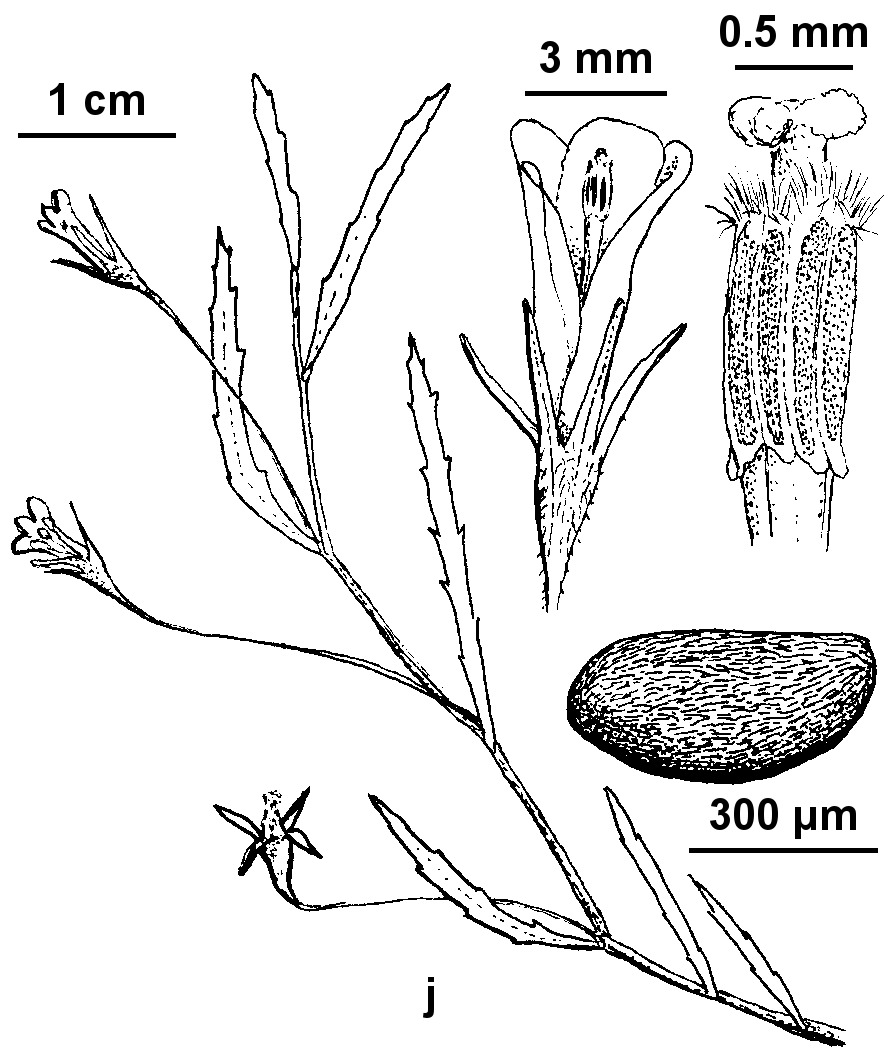Monopsis debilis var. depressa
(L.f.) PhillipsonDecumbent to ascending annual, to c. 30 cm high; stems with deflexed hairs or glabrous, usually several from near base, not rooting at nodes. Leaves alternate, sessile, linear to linear-oblanceolate, 2–30 mm long, 0.8–3 mm wide, margins 1–3-toothed in distal half. Flowers in leafy racemes or raceme-like cymes; pedicels 10–35 mm long, elongating in fruit, glabrous or with deflexed hairs. Calyx-lobes 2.4–4 mm long, entire; corolla weakly zygomorphic, 5.5–7.5 mm long, deep purple, lobes similar or the lower 3 slightly broader, obovate to orbicular, erect to slightly spreading, c. 3 mm long, c. 3 mm wide, tube c. 4 mm long, split almost to base, glabrous internally; filaments c. 3–4.2 mm long, anther tube 0.8–1 mm long. Capsule obconical, 4.5–7 mm long, pubescent; seeds ellipsoid, c. 0.4–0.5 mm long, brown, reticulate with elongate alveoles. Flowers Oct.–Jan.; fruits Jan. (1 record).
Wim, GleP, DunT. Currently uncommon in Victoria, where known with certainty from only 5 seasonally swampy locations in the Casterton-Strathdownie-Dergholm area.
The nomenclature and taxonomy of this species follows Phillipson (1986). However Phillipson (1986) recognizes 3 varieties of M. debilis, referring all Australian specimens to var. depressa (L. f.) Phillipson. This placement of Australian material is equivocal, the corolla-lobe dimensions being more characteristic of var. debilis. Furthermore, specimens from South Australia, New South Wales and Victoria differ from those of Western Australia by being hairier, especially on the hypanthium and external surface of the corolla. The Western Australian populations are likely to have originated from a separate introduction event as suggested by Barker (1984b). Unlike other Victorian members of the Lobelioideae, Monopsis has protogynous flowers, i.e. the female stage preceding the male stage. The stigmas become receptive as they protrude from the anther tube, and after fertilization the style elongates exposing the pollen on the pollen-presenting hairs (located c. 0.4–0.7 mm below the stigma cleft).
 Spinning
Spinning


